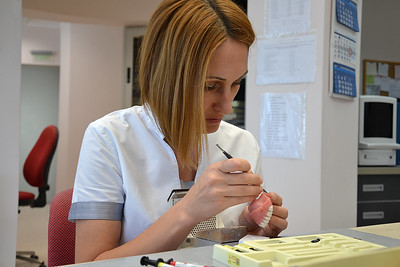Earlier this month, Kirkwood Community College in Cedar Rapids, IA, announced that it would lay off 28 full- and part-time faculty members. Some of the staff cuts reflect changes to or eliminations of occupational education programs with low enrollment. Two of the programs KCC will eliminate are Dental Technology and Energy Production and Distribution. Between them, these two programs enroll 37 students.
The Dental Technology program produces what the Bureau of Labor Statistics terms “Medical Appliance Technicians.” These workers make custom-fit dentures and dental appliances for individuals. Based on BLS data, there are more than 73,000 people nationwide employed in this industry. In 2021, the BLS estimated that the field would add 1,400 jobs. The median pay for a dental technician was about $39,000 in 2021.
The Energy Production and Distribution program teaches wind turbine repair and maintenance skills. According to the BLS, the demand for wind turbine technicians will increase by 44% through 2031. The industry is expected to add nearly 5,000 jobs in that time. The median salary for wind turbine technicians is $56,250 per year.
According to Kirkwood Community College officials, the college will realize savings by cutting the programs by eliminating future equipment replacement and maintenance costs.
The numbers may make sense here, but communities fund community colleges to ensure that they have the workforce the community needs. It’s not a profit-and-loss question. Regardless of the cost of training dental technicians or wind turbine technicians, the community still needs those individuals.
As a rule, occupational education programs are expensive to operate. They often require specialized equipment, and yes, the programs incur maintenance and replacement costs. But so does every other occupational program in the college’s catalog. It’s what the accountants call “the cost of doing business.”
Communities don’t fund occupational education to make a buck
Communities fund community colleges precisely because occupational education is expensive. If decisions about programs were based solely on how much money a college could make by running the program, it would make some sense to consider operational costs versus enrollment. But community colleges aren’t businesses, so the profit-and-loss motivation simply doesn’t wash.
If there were no demand for its graduates, closing a program would make sense. In the case of both of these programs, there is market demand for graduates of these programs. How much they cost to run is irrelevant as long as the labor market has room for them. The community has funded expensive occupational education programs precisely because it needs people in these fields even if the corresponding educational program won’t turn a profit.
Community college administrators rely on “losing money” to prop up their weak (or unspoken) rationales for making unpopular or unwise program cuts. Realistically, community need should drive any decisions about program cuts.
There are few reasons a community college should cut an occupational program. When the community need no longer warrants it, and when the program’s graduates cannot make a living wage after graduation are the only two that come to mind.
Photo Credit: Dentaprime , via Flickr













